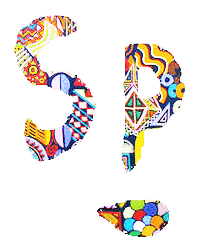Painting Is History?
- Stephen Hornsby-Smith

- Sep 12, 2015
- 4 min read
Art historians boasted of the ‘demise’ of Painting in the 1980’s. But was Painting finished? Its originality exhausted? Its frontiers of Abstraction and Naturalism emptied of creativity? Such ‘fashionable’ ideas poisoned the contribution of Painting in a race to be the most opinionated by a’ profession unable to be creative itself’, and yet exchanging ‘trend subjectivity’ for analysis. This headline hunting boarded on a tabloid mentality and it is in this environment that I wanted to pick a fight with Art authority. The form, medium, subject matter, and further unresolved issues contained my agenda to bring down what appeared to me as Art ‘sleeze’ and its short-termism. Travelling from the USA ”to” Catalonia, I identified with the latter seeking to re-establish its own cultural linguistic and geographical independence.

With all the mayhem and detritus of being an artistic heretic and marginalised by being an ex West Yorkshire student of political experience of Thatcherism, I glorified in the arid limitations of the man-made and the pressure-cooker of self- imposed exile. Whereas some found the limitations of the canvas etc resulted in a choking of creative energy, I derived a desire to trap originality once creative pressure exploded when hemmed in by the very limitations ‘Painting had to offer’. Furthermore, I felt not standing ones artistic ground epitomised the cowardice
and dilution and diffusion of Art’s message. It was a risk and over-ambitious, but I worked hard on firstly, cherishing the limitations of the 2 dimensional and the finite surface of the canvas and its inherent discipline of paint application, and secondly, raging against the temporal shifting sands of life and its human arrogance. For example, deciding not to turn-up at my graduation day said to me ‘bugger-off academia’, but it probably was juvenile and seems today more like an opportunity to escape from a hydra of a relationship than any overt rebelliousness. That said, I cemented a need for counter-intuitive lunges in my desire to define my artistic direction: I had found the profundity of imperfection hazardously fascinating whilst being banished from anything aesthetically more pleasing. It wasn’t the big break I’d been hoping for. It wasn’t grand or terrifyingly dangerous, but perhaps where there’s muck there’s brass. Indeed, all ’awkward’ questions, all short-circuiting cul de sacs were relegated to the fusion of this ‘Painting condition’ with inevitable human failure. Even failure of failure didn’t beat to the drum of ‘existential’ longings of post-teenager aspirations. What was this beast of “slings and arrows of outrageous fortune” that had embraced our ”mortal coil” but expected in return social and artistic confinement until some melt-down of our inner core would shatter false-ceilings and fetters that imprisoned the vitality of life? Prone to’ Englishisms, with all their respectability and code of restraint seemed to me to be denying the sort of life force that I needed to break on through to the other side. In fact conceptual art of the era represented all the ‘qualifications’ of Art and Art-practice in which rebellion was an accepted form of conformity. So I made myself dependant on my Painting rather than dependant on rebelliousness, sink or swim: “Don’t get me wrong, but don’t get me right either”, seemed to do it.
This self-imposed mantra both liberated and horrified me, but was essentially youthful zeal that rendered me self-consumed. The only point I felt inspirationally radicalised was when Chinese students demonstrated that the political agendas didn’t have to be about political isms or youthful hubris, but about fellow inquiring minds refreshed by democracy. I still put great store on the way that (despite military suppression and short-term failure) today’s liberalisation in Chinas free market, was won in 1989 by their true valour and sacrifice.
Furthermore, such an axiomatic standard represented the paradox of open flexible self-correction against closed linear dogmatism, feeding the contradictory foibles and limitations of human existence. Damn! Another paradox! Yet without dogma freedom cannot be won- without freedom dogma cannot be lost. From the excitement of fluid liberation and the non-sentimental doctrine competing for my attention, a transformation of values occurred. For the first time I could contextualise centuries of beauty, tragedy and nobility, only to be found in Art.
So had I evolved as a Painter and as an observer when I had synthesised anger with the calm of appreciation? I’d broken with confrontationalism, for respect and admiration, yes, but also for freedom free of convention too. This proved to me that you must win battles closest to you from the example of others far away. Ah, perspective. Every Painter has to make constant decisions, making Painting an extremely demanding but also hazardous medium. Perhaps the discovery of 21st century ‘perspective’ is most difficult to achieve in a medium that gave birth to different type of ‘renaissance’ perspective? But why should Art like politics be a great healer when it can be an adversary too? Indeed, perhaps when ones artistic pores are most open, extremism, disconnection or tribalism and the herd are never far away. Or not? You decide.









Comments